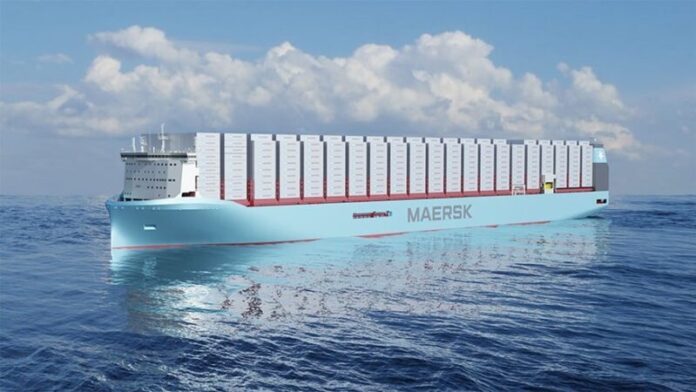
-
Shipowners’ appetite for new vessels will lead to significant changes to the world’s container fleet, says BIMCO analyst
-
Neils Rasmussen says in the last 10 quarters, shipowners had contracted 8.61 million TEUs, matching the level ordered in the preceding 30 quarters and setting records in each of the last four
-
Most importantly, he says the new ships will be more fuel efficient than most of the existing fleet as their use of alternative fuels will help reduce their greenhouse gas emissions
Shipowners’ record-high 7.5-million twenty-foot equivalent unit (TEU) ship orders flag significant changes to the global container fleet, according to Baltic and International Maritime Council (BIMCO) chief analyst Neils Rasmussen, who notes their appetite for new vessels despite falling rates. Most importantly, he says, the new ships will emit less carbon.
Rasmussen’s industry update on April 13 came as prices continued to decline on the major international shipping lanes, with only the Shanghai-New York and Shanghai-Rotterdam rates rising on Drewry’s and Freightos’ indices.
Rasmussen said that during the last 10 quarters, shipowners had contracted 8.61 million TEU, matching the level ordered in the preceding 30 quarters and setting records in each of the last four quarters.
He said the existing 7.54 million-TEU order book equals 28.9% of the existing fleet, which will expand significantly when 5.03 million TEUs are delivered this year and in 2024.
With just 1 million TEUs estimated to be scrapped, the new capacity in the pipeline will soon expand the fleet for the first time to more than 30 million TEUs, up 16% from current levels, Rasmussen said.
“Delivery of the ships will also increase the fuel types used. 57% of TEU capacity in the order book involves ships with some level of alternative fuels preparation compared to only 10% in the current fleet. The first ships using methanol will be delivered and the first ammonia-ready ships will also be launched,” he said.
“Soon, five different fuels could be in use: low- and high-sulphur fuel oil, LNG, methanol, and ammonia. As the use of alternative fuels increases, it will become increasingly difficult to establish a single relevant rate benchmark for the time charter and asset markets.”
Most importantly, the new ships will be more fuel efficient than most of the existing ships and the introduction of alternative fuels will help reduce their greenhouse gas emissions, he said.
RELATED READ: Maersk green-fuel-powered vessels
On the rates front, Drewry Supply Chain Advisors said its composite World Container Index stabilized at US$1,708.63 per 40-foot (FEU) container in the week to April 13, having dropped 78% from a year ago.
The index is now 84% below the peak of $10,377 reached in September 2021 and 36% lower than the 10-year average of $2,688, indicating a return to more normal prices, Drewry said. However, the index remains 20% higher than its average 2019 pre-pandemic rate of $1,420.
The average composite index year-to-date is $1,908/FEU, $780 lower than the 10-year average. Freight rates on Rotterdam-Shanghai fell 5% to $642/FEU. Rates on Shanghai-Los Angeles and New York-Rotterdam slid by 4% each to $1,674 and $1,025/FEU, respectively.
However, Drewry said rates on Shanghai-Rotterdam rose 4% to $1,598/FEU. Similarly, Shanghai-New York inched up 2% to $2,552/FEU.
Continuing the trend, rates on Shanghai-Genoa, Los Angeles-Shanghai and Rotterdam-New York hovered around the previous week’s level. Drewry expects East-West spot rates on routes other than the transatlantic to plateau in the next few weeks.
The Freightos Baltic Index Asia-US West Coast prices decreased 1% to $1,000/FEU, a drop of 94% from the same time last year. Asia-US East Coast prices rose 4% to $2,171/FEU, down 87% down from levels this week last year.
Asia-Northern Europe prices rose 6% to $1,427/FEU and are 88% below rates this time a year ago.
The latest US National Retail Federation (NRF) ocean import data estimate March volumes were nearly 30% below year-ago levels reflected on trans-Pacific rates, which are about 90% lower than a year ago and well below 2019 levels, said Freightos head of research Judah Levine.
NRF’s March estimates are 8% higher than in February and 4% higher than in March 2019, Levine said.
He said although Hapag Lloyd’s announcement of a significant ex-Asia general rate increase for May is likely more a sign of confidence in capacity cuts than of hopes for an imminent rebound, there are signs the industry is heading for a volume recovery in time for peak season this year.




